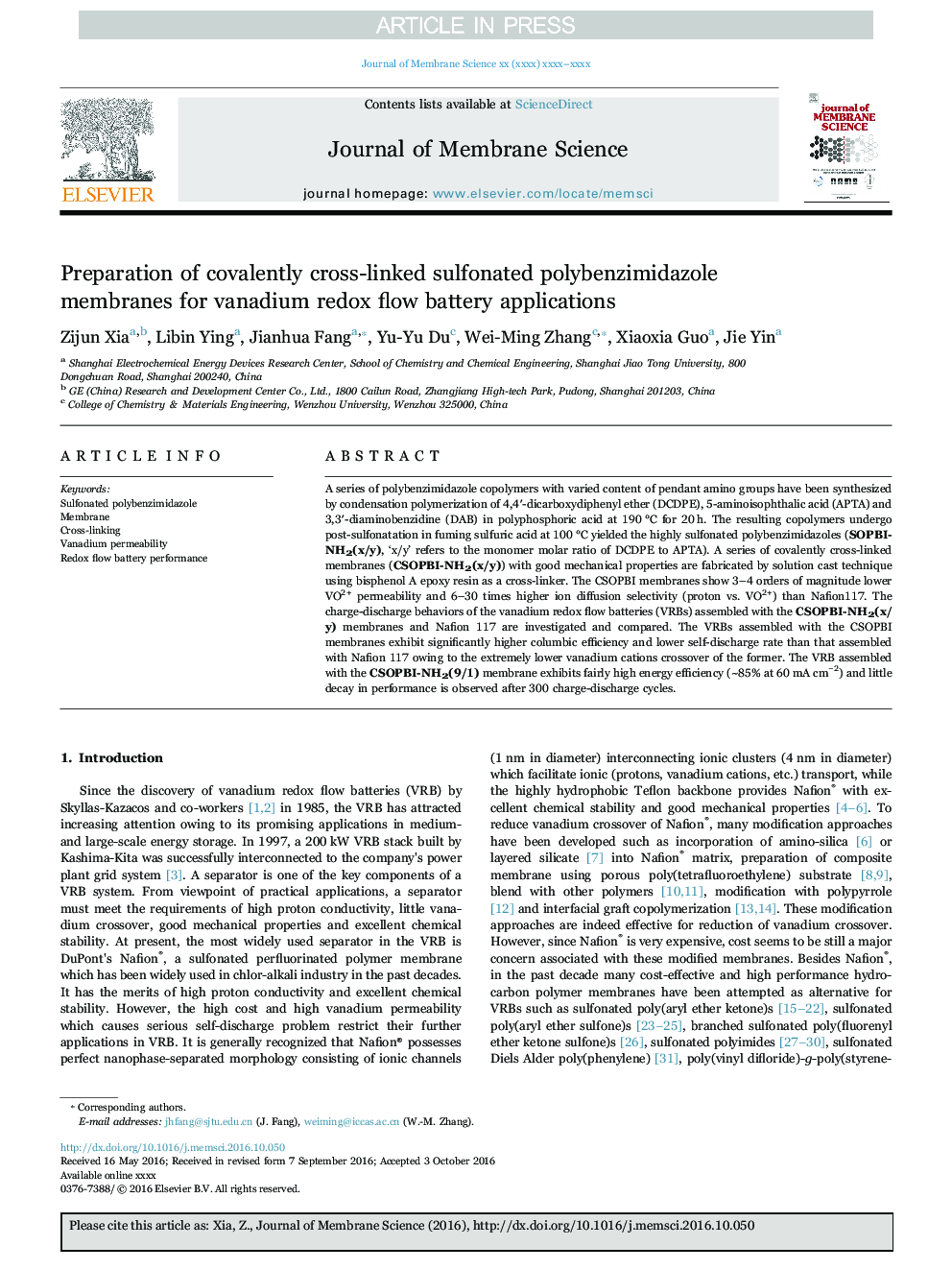| کد مقاله | کد نشریه | سال انتشار | مقاله انگلیسی | نسخه تمام متن |
|---|---|---|---|---|
| 4989408 | 1455974 | 2017 | 11 صفحه PDF | دانلود رایگان |
عنوان انگلیسی مقاله ISI
Preparation of covalently cross-linked sulfonated polybenzimidazole membranes for vanadium redox flow battery applications
ترجمه فارسی عنوان
آماده سازی غشاء پلی وین آمیت با استفاده از باطری جریان مجدد وانوادیم
دانلود مقاله + سفارش ترجمه
دانلود مقاله ISI انگلیسی
رایگان برای ایرانیان
کلمات کلیدی
موضوعات مرتبط
مهندسی و علوم پایه
مهندسی شیمی
تصفیه و جداسازی
چکیده انگلیسی
A series of polybenzimidazole copolymers with varied content of pendant amino groups have been synthesized by condensation polymerization of 4,4â²-dicarboxydiphenyl ether (DCDPE), 5-aminoisophthalic acid (APTA) and 3,3â²-diaminobenzidine (DAB) in polyphosphoric acid at 190 °C for 20 h. The resulting copolymers undergo post-sulfonatation in fuming sulfuric acid at 100 °C yielded the highly sulfonated polybenzimidazoles (SOPBI-NH2(x/y), 'x/y' refers to the monomer molar ratio of DCDPE to APTA). A series of covalently cross-linked membranes (CSOPBI-NH2(x/y)) with good mechanical properties are fabricated by solution cast technique using bisphenol A epoxy resin as a cross-linker. The CSOPBI membranes show 3-4 orders of magnitude lower VO2+ permeability and 6-30 times higher ion diffusion selectivity (proton vs. VO2+) than Nafion117. The charge-discharge behaviors of the vanadium redox flow batteries (VRBs) assembled with the CSOPBI-NH2(x/y) membranes and Nafion 117 are investigated and compared. The VRBs assembled with the CSOPBI membranes exhibit significantly higher columbic efficiency and lower self-discharge rate than that assembled with Nafion 117 owing to the extremely lower vanadium cations crossover of the former. The VRB assembled with the CSOPBI-NH2(9/1) membrane exhibits fairly high energy efficiency (~85% at 60 mA cmâ2) and little decay in performance is observed after 300 charge-discharge cycles.
ناشر
Database: Elsevier - ScienceDirect (ساینس دایرکت)
Journal: Journal of Membrane Science - Volume 525, 1 March 2017, Pages 229-239
Journal: Journal of Membrane Science - Volume 525, 1 March 2017, Pages 229-239
نویسندگان
Zijun Xia, Libin Ying, Jianhua Fang, Yu-Yu Du, Wei-Ming Zhang, Xiaoxia Guo, Jie Yin,
